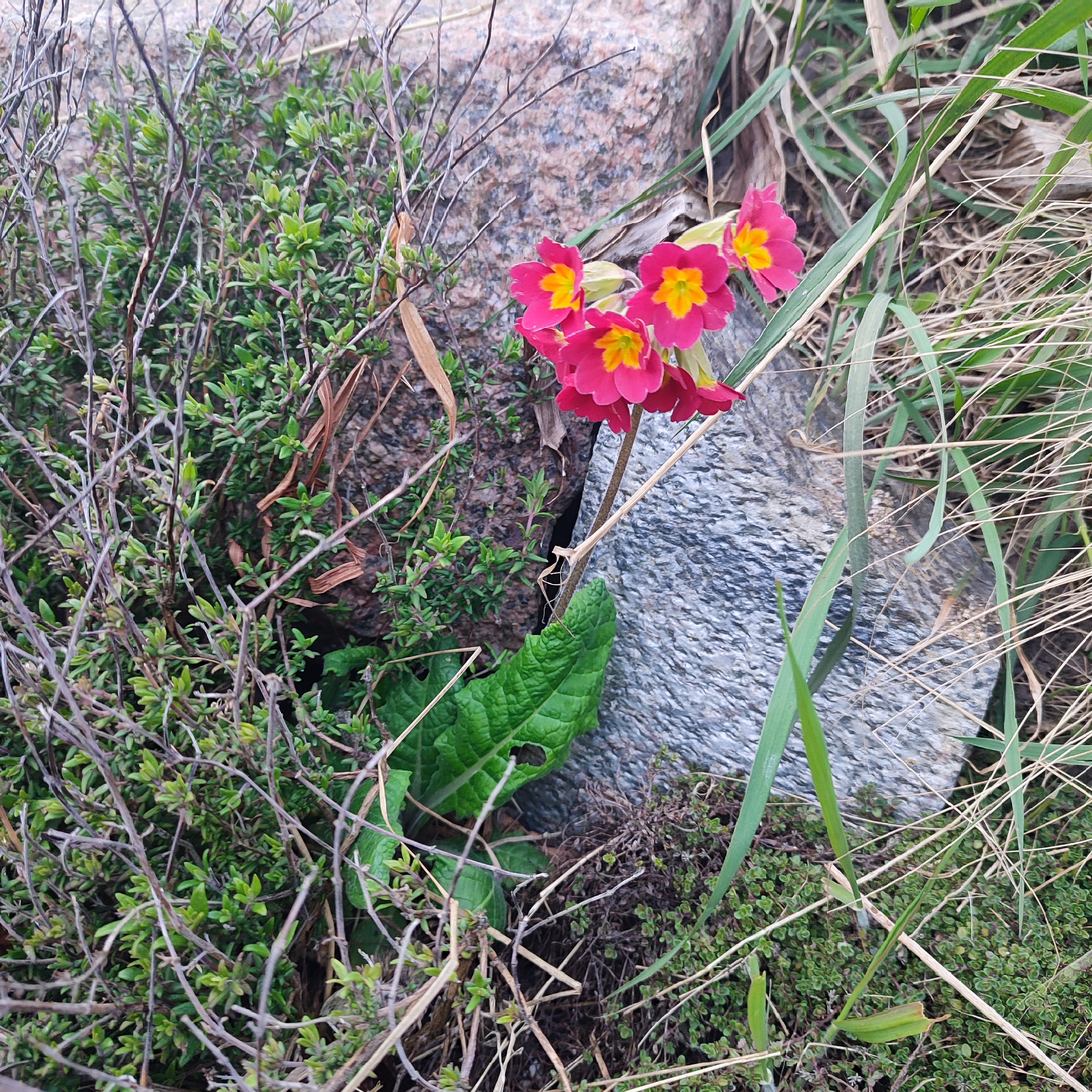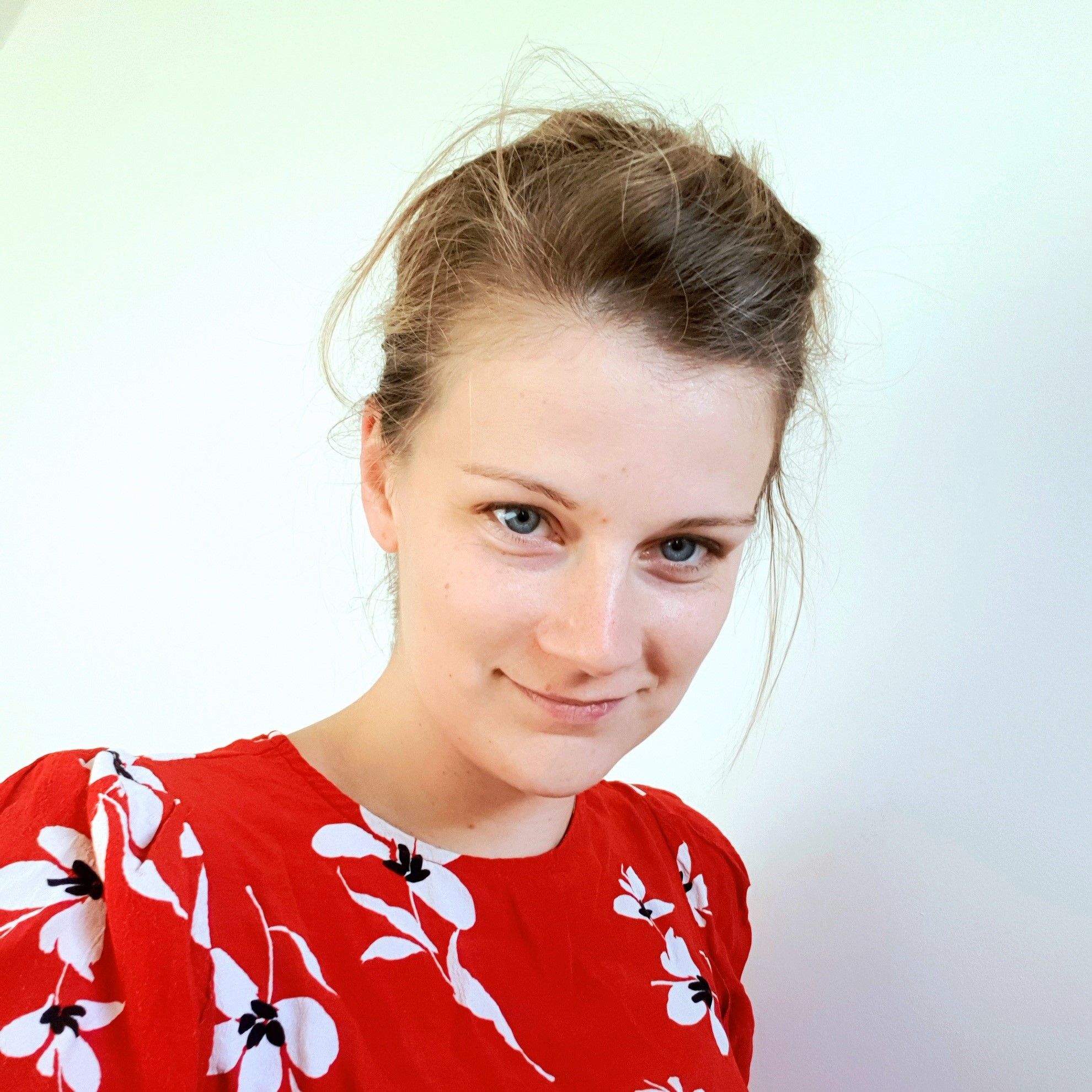Hybridisation as a Tool To Manage Multiple Specialisms in Research; 🧠 Brain STREAM Issue 30
How blending specialisms and using 'hybrid vigour' creates something greater than the sum of its parts.

Last week, I noticed an unusual flower in my garden. Instead of the normal sunshine yellow, one of my self-seeded cowslips - Primula veris - had come up as a rich red. It was a hybrid, blended from its wild counterpart and a garden polyanthus cultivar.
It reminded me of a blog post I had read a few years back about the value of hybridisation as an employee trait. Surprisingly, I easily relocated the post - PKM works sometimes!! - and upon rereading it I had a few thoughts on what it means to be a person with hybrid skills, and the implications of hybridisation, both from an ecological science perspective and from a business or research perspective.
There is a lot of merit around being a 'hybrid person', but more specifically I want to look at what it means to be one and how we could use it to manage the multiple specialisms of a researcher life. This is because there is a big difference between being a 'multi-specialist' and being a 'hybrid'.
And when I'm talking about 'hybrid worker', I'm not talking about the office-working-from-home type of hybrid, though it would be relevant to the discussion.
Let's explore.

The Ecological Bit: What Are Hybrids and What Is Hybridisation?
Let's get the technicalities out of the way first so we are all on the same page. I'm a plant ecologist/soil scientist, so we're going to consider the definition of hybrid in the context of plants and animals, but the concept equally applies to other life forms, words, cars, and physics etc. I'm focusing on definitions from the Collins Dictionary (2023) rather than going into hardcore ecology definitions!
"Hybrid (n) - an animal or plant resulting from a cross between genetically unlike individuals. Hybrids between different species are usually sterile."
So a hybrid is a newly created, functioning thing, and may or may not be replicable. In our workplace-based scenario, a hybrid is a blend of two things like skills, expertise or subjects. Hybridisation - the process of creating a hybrid - is different from having a specialism, or being a generalist. This is an important distinction when we consider what it means to be someone with hybrid expertise, rather than someone with multiple, but distinct areas of expertise.
Specialist (n) - an organism that has special nutritional requirements and lives in a restricted habitat that provides these.
Generalist (n) - an organism able to utilise many food sources and therefore able to flourish in many habitats.
If we change the 'food' aspect to 'work' or 'skills' it means a specialist has a specific skill set which is only applicable in certain work scenarios. On the other hand, a generalist person has a wide range of skills. On considering this, we might question why we should bother being a specialist, but that is a topic for another day. Today we are talking hybrids.
Because a hybrid is a new thing, it could be a specialist or a generalist with novel and beneficial characteristics. It could also be completely useless or have limited application. It may be able to make more of itself, if characteristics are more easily transferred, or it may be a unique, one-off creation. In ecology, if you have the original populations, you may be able to make a new hybrid easily enough, or it may have been a freak occurrence and the hybrid is truly a unicorn and highly unusual.
In the case of my new garden plant, it's not unusual for a wild cowslip - Primula veris - to hybridise with a garden polyanthus. Red flowers are a common result, even though garden varieties exist in pretty much every colour, except blue. I could call this new plant "Primula x polyantha 'Raspberry Bakewell'" if I wanted, propagate it through division (not seeds), and sell it as a new variety. Fun maybe, but that won't make me a millionaire; this individual is not particularly unusual. Chances are it is semi-fertile, meaning some of its seeds will grow and some won't. It's very common for the Primula family to cross around so all this little individual does is look pretty in my garden. It's unlikely it has much other 'enhanced' functionality over the native cowslip due to its 50% garden origin, and would likely die out in the wild where Primula veris and Primula vulgaris would take over.
Being able to hybridise can be advantageous if you are a specialist and the environment is unstable, or you want to colonise new environments. It can introduce new characteristics into a population very quickly, so if you are struggling to survive, a fresh new injection of something useful, in combination with what you already have, can be incredibly beneficial. It can lead to a phenomenon known as hybrid vigour or 'heterosis'.
"Hybrid vigour (or heterosis) (n) - the increased size, strength etc of a hybrid as compared to either of its parents."
The reasoning behind hybrid individuals having enhanced growth and desirable characteristics is not really known, but it's likely something to do with less desirable characteristics being suppressed. Back in the day we hybridised with other hominins, and look where that got us... Many of the veggies we grow are 'F1 hybrids'. This is the first generation of two distinct parents, specifically bred for better growth, enhanced disease resistance and higher productivity. Because it requires people power to create these individuals, it makes them more expensive. Any seeds of this F1 generation, if they produce seeds at all, may or may not have the characteristics of the hybrid. Hence why growing seeds collected from an F1 plant variety sometimes works, but often doesn't.
It can also, often go wrong; the individual ends up less adapted and ends up in some weird purgatory in the middle, not able to reproduce, and not able to do well in an old or new environment. Plus if the hybrid is too successful, then it can wipe out rare populations of individuals - the original super specialists - losing valuable information in the process.
This is not helpful to anyone. We want to ensure that we retain the benefits of being a hybrid whilst avoiding the pitfalls. And if you haven’t guessed by now, we can use hybridisation as a researcher to call upon our hybrid vigour. We can combine multiple specialist fields to create something new and unique.
Thanks for reading 🧠 Brain STREAM ! This post is public so feel free to share it.
The Business Bit: T- and U-shaped People/Teams
The blog post from Steph Ango (Obsidian CEO) I alluded to earlier spoke of the incredible value of U-shaped people. It was this concept that sparked my interest in the post. I'd heard of T-shaped people before, but not U-shaped (also known as pi-shaped). The idea with this concept of people or team classification is that the horizontal direction represents learning and the vertical represents expertise. Here are some examples of this idea:
- An I-shaped person has a single area of expertise, but little background understanding - many 'traditional' academics fall under this category
- A T-shaped person has a broad range of general skills and one specialism - pretty handy in a team sense as they have a basic understanding of many other things
- A pi-shaped person (U-shaped) on the other hand has a broad range of skills with an additional two disparate specialties
- An M-shaped person, if you want to get fancy, is probably the gold standard with three specialisms and a broad range of skills to boot (though arguably they are missing some generalist skills depending on the font... 😅)
The business world loves its metaphors - we also have E-shaped people (with experience, expertise, exploration and execution) and X-shaped people (who mix purpose and vision with self-awareness).
But these alphabet models don't really explain or help us with how our different skills actually work together. They don't tell us how to manage multiple specialisms without burning out. This is where looking at hybridisation helps - it's about how our different skills interact and creates something better than just the sum of the parts.
What's important to understand by this point is the difference between having multiple specialties and being a true hybrid. Simply having expertise in two areas doesn't automatically make you a hybrid - it's about how you mix and match those specialties to create something new. A hybrid researcher actively blends their knowledge to create novel approaches, rather than just switching between separate skill sets.
The Applicable Bit: What Can We Do With This Information as Researchers?
The modern research world wants us to be everything to everyone. We're expected to be specialists in our field while also being great at teaching, statistics, writing, admin, management, and technical work. It's too much and leads to burnout.
Let's be real - no one can be a specialist in everything. Two or three areas is plenty! The trick, as I have alluded to, is hybridising these areas - creating your own unique blend that lets you move forward in a way that works for you. Like hybrid vigour in plants, this approach lets you focus on what you're good at while putting less energy into the things you're not.
I’m all for working to strengths and minimising exposure to weaknesses where possible.
The cool bit happens in the mix. Someone with true hybrid expertise doesn't just know multiple things; they create something new by bringing those different areas together. It's the mixing that matters, not just having separate skills.
This is what I try to do with this newsletter. I don't just apply plant ecology concepts, writing and scientific methodology separately; I blend them together to help understand how they interrelate. It helps me be a better researcher if I understand 'how nature does science' and 'how nature solves problems'. Hybridisation is a great example of this.
Being a hybrid researcher offers some nice advantages:
- You can create entirely new research areas
- Your unique skill set helps you stand out in different specialist communities
- You'll spot opportunities that specialists in either field might miss
- Inspiring people to try new things
Of course, there are challenges too:
- If your hybrid approach is too generic, specialists might beat you at their own game
- Finding focus takes extra work when you're working across boundaries
- Building credibility in multiple fields takes time and persistence
- The path can sometimes feel lonely when few others share your specific mix
[On a parenting note, I am literally writing this whilst my daughter is spouting something about jelly babies in one of my ears 😅. Truly hybrid working and a skill honed over many years 🤣]
We need to be careful to create something that actually works in practice. The best hybrids don't just sit in the middle - they create something new that serves a specific purpose really well. The magic of hybridisation is its ability to pull in multiple audiences that wouldn’t normally meet.
Enjoying reading this? Make sure to subscribe!
The Action Bit: Find Your Hybrid Vigour
So how can you develop your own hybrid approach as a researcher? Here are a few ideas:
Look around you for inspiration - What inspiring people or things are blends of unusual things? Books can be helpful here.
Identify your core strengths - What are your two or three strongest areas? (Don’t go for more than three).
Look for natural connections - Where do your different interests already overlap? Are there new ways they could overlap?
Create something new - Start a project that deliberately combines your different skills. Challenge yourself. Here’s some previous ideas that jump to mind:
the Art of Soil - combines art and soil
Run for Soil - combines running and soil
Giant Microbes - combines microbes and cuddly toys 😍
Brain STREAM newsletter - combines nature and research skills…
Embrace what makes you different - Your specific combination is what makes you valuable in ways others aren't. Really hone in on what makes you, you.
Find your people - Connect with others who work across similar boundaries or who get close.
Go for it with consistent practise - Hybridisation might be a chance encounter, or it can take a while!
Like my red primula, your hybrid approach doesn't have to be revolutionary to be valuable. My little garden hybrid isn't going to change the world of horticulture, but it's unique, it works in my garden's specific conditions, and it brings me joy. Sometimes it's the thoughtful blending of different areas that creates something beautiful in its own context.
"Man, a hybrid of plant and ghost"
— Friedrich Nietzsche
What I'm Reading
- Just finished "The Ecology of Learning" by John Blewitt - TLDR; we need to learn how to action sustainability and we can do this through everyday life, as long as we expose ourselves to these learning environments and recognise how they can teach us.
- "The Slow Professor" by Maggie Berg and Barbara Seeber - TLDR; we need to slow down in academia…
What's your hybrid blend? I’d love to know!
